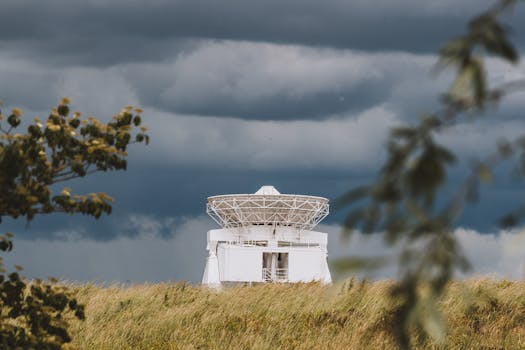GEO Satellites: Understanding the Role of Geostationary Orbit in Modern Communication
GEO satellites play a crucial role in modern communication, providing a wide range of services including television broadcasting, telecommunications, and weather forecasting. In this article, we will explore the concept of geostationary orbit and its significance in satellite communication.

GEO Satellites: Introduction to Geostationary Orbit
GEO satellites, or Geostationary Orbit satellites, are a type of satellite that orbits the Earth at an altitude of approximately 36,000 kilometers above the equator. The focus keyword GEO satellites are designed to remain stationary with respect to a fixed point on the Earth’s surface, allowing them to provide continuous coverage of a specific region. This is achieved by synchronizing the satellite’s orbital period with the Earth’s rotational period, resulting in a constant position in the sky relative to an observer on the ground.
The concept of geostationary orbit was first proposed by scientist Arthur C. Clarke in 1945, and the first geostationary satellite, Syncom 2, was launched in 1963. Since then, GEO satellites have become a crucial component of modern communication systems, providing a wide range of services including television broadcasting, telecommunications, and weather forecasting.
How GEO Satellites Work
GEO satellites work by transmitting and receiving signals to and from Earth stations, which are equipped with large antennas and other specialized equipment. The satellites receive signals from the Earth station, amplify them, and then re-transmit them back to Earth, allowing the signal to be received by other Earth stations or directly by consumers. This process enables the satellite to act as a repeater, extending the range of communication signals and allowing them to be transmitted over long distances.
GEO satellites are typically equipped with a range of instruments and antennas, including transponders, which are responsible for receiving and re-transmitting signals. The satellites are also equipped with solar panels, which provide power, and propulsion systems, which allow them to maintain their position in orbit.
Applications of GEO Satellites
GEO satellites have a wide range of applications, including television broadcasting, telecommunications, weather forecasting, and navigation. They are used by television broadcasters to transmit signals to a wide audience, and by telecommunications companies to provide internet and phone services to remote or underserved areas.
GEO satellites are also used by meteorologists to monitor weather patterns and provide forecasts. They are equipped with specialized instruments, such as cameras and sensors, which allow them to collect data on atmospheric conditions, sea surface temperatures, and other environmental factors.
Challenges and Limitations of GEO Satellites
While GEO satellites have many benefits, they also have some challenges and limitations. One of the main challenges is the high cost of launching and operating a GEO satellite, which can be tens of millions of dollars. Additionally, GEO satellites are subject to interference from other satellites and terrestrial systems, which can affect their performance and reliability.
Another limitation of GEO satellites is their limited bandwidth, which can result in slower data speeds and lower quality signals. This can be a problem for applications that require high-speed data transfer, such as video streaming and online gaming.
Despite these challenges and limitations, GEO satellites remain an essential component of modern communication systems, providing a wide range of services and benefits to consumers and industries around the world. As technology continues to evolve, it is likely that GEO satellites will play an even more important role in the future of communication.




